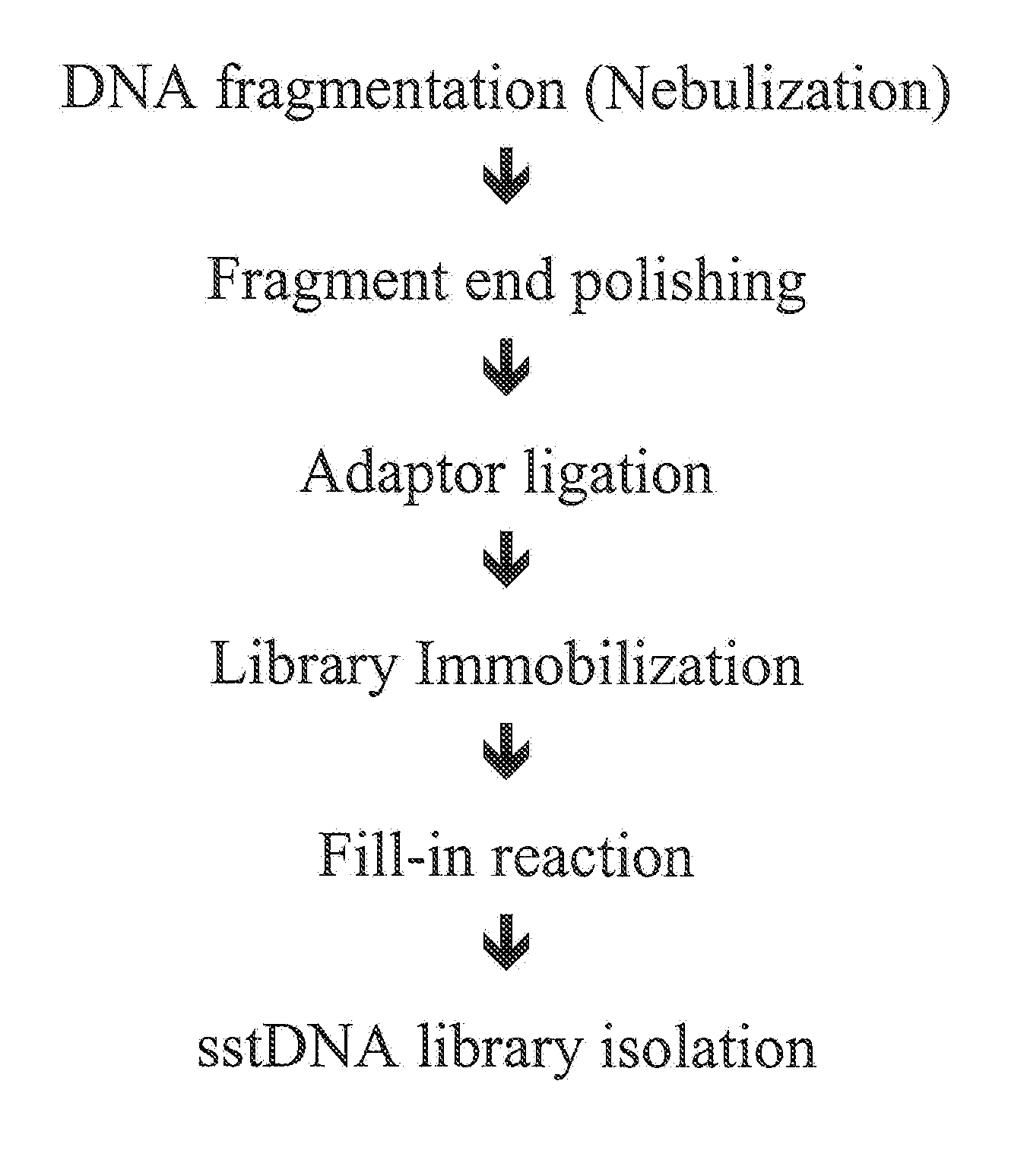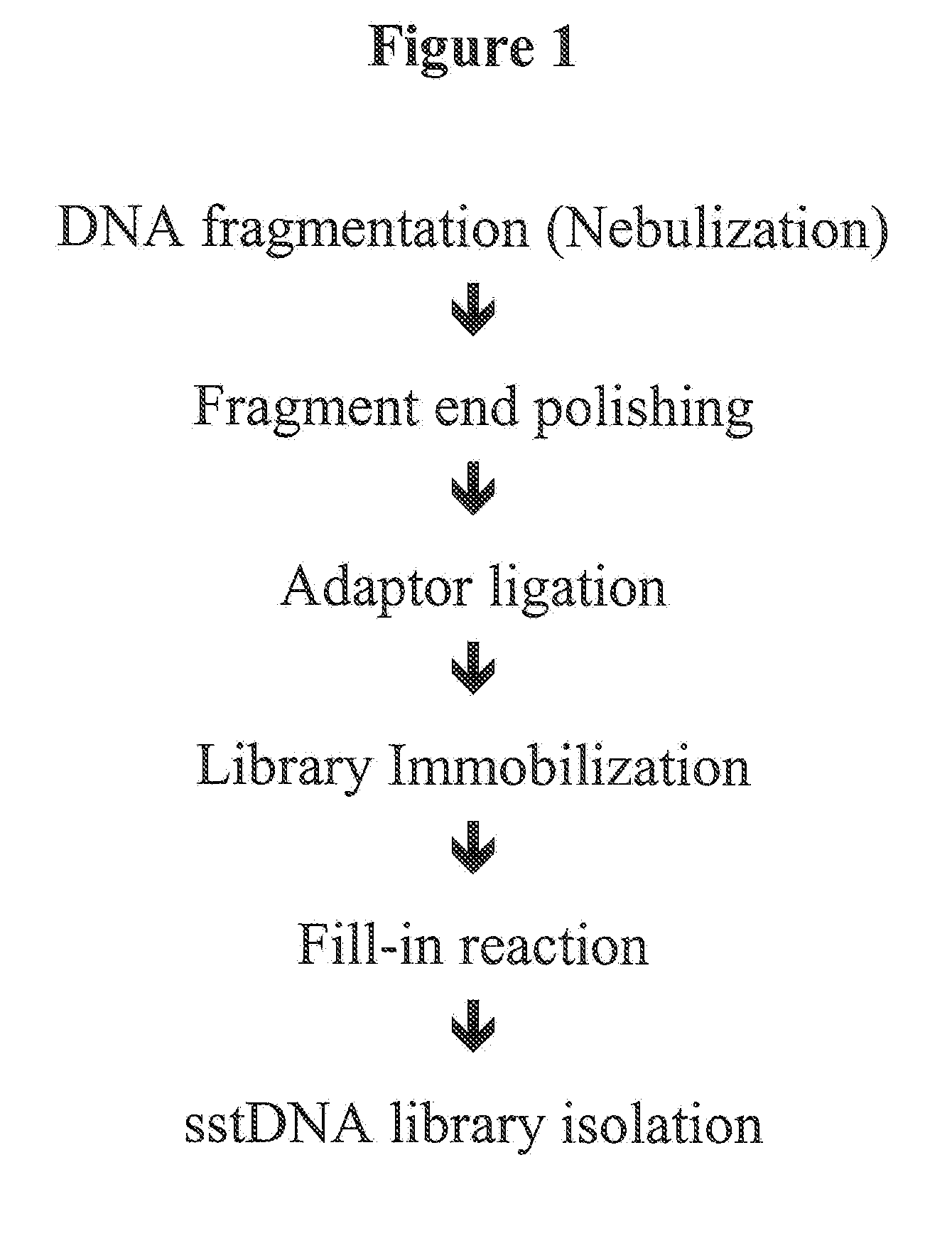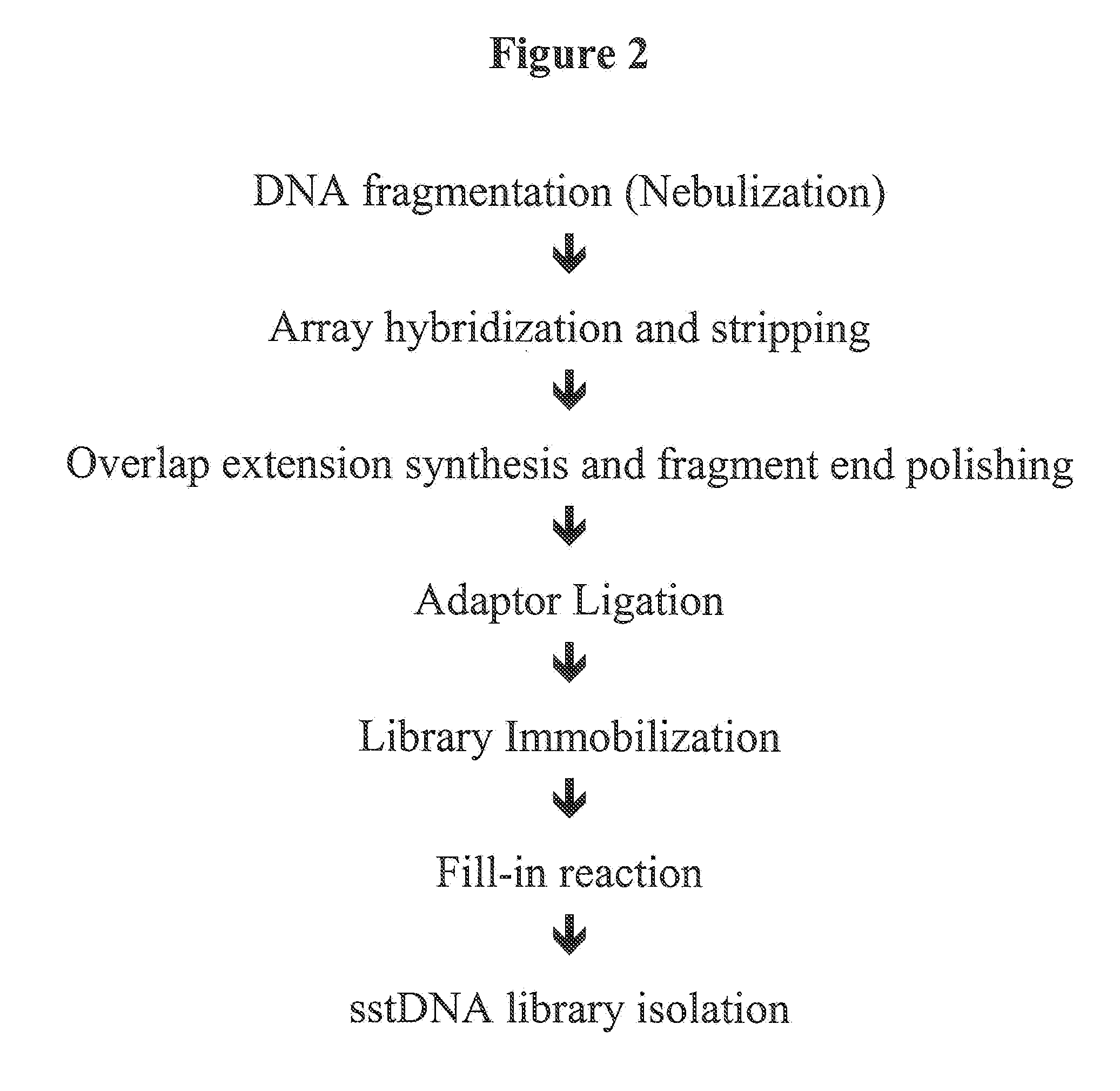Target preparation for parallel sequencing of complex genomes
a technology of complex genomes and target preparations, applied in the field of dna sequence analysis, can solve the problems of loss of such elements which are conserved, no simple method allowing the sequencing of a substantial part of a complex genome, and high repetition ra
- Summary
- Abstract
- Description
- Claims
- Application Information
AI Technical Summary
Benefits of technology
Problems solved by technology
Method used
Image
Examples
example 1
[0073]Example 1 is related to the enrichment of specific portions of genomic DNA according to the procedure described in FIG. 2. This example uses high amounts of input sample DNA and therefore do not include an amplification step during single stranded DNA library preparation. Specific DNA is captured as random single strand fragments on the chip. The chip has to carry capture probes for both strands. After washing and elution complementary strands are hybridized, the resulting overhangs are filled and the ends are polished. Now the protocol proceeds with the standard method starting with the step of linker ligation.
Fragmentation:
[0074]Obtain 1-100 μg of sample DNA (in TE) and pipette it to the bottom (cup) of a Nebulizer.
[0075]Add TE Buffer to a final volume of 100 μl.
[0076]Add 500 μl of Nebulization Buffer and mix thoroughly by swirling or pipetting up and down.
[0077]Apply the sample to fragmentation.
[0078]Total recovery should be greater than 300 μl.
[0079]Add 2.5 ml of Qiagen's ...
example 2
[0158]Example 2 is related to the enrichment of specific portions of genomic DNA including PCR based amplification according to the procedure described in FIG. 3. This variant requires less starting material since a PCR based amplification is included in the workflow. Until the step of linker ligation this protocol is identical to variant 1. After adapter ligation the double-stranded target DNA is amplified via PCR (5-25 cycles) using the adapter sequences as priming sites.
Fragmentation:
[0159]Obtain 0.5-5 μg of sample DNA (in TE) and pipette it to the bottom (cup) of a Nebulizer.
[0160]Add TE Buffer to a final volume of 100 μl.
[0161]Add 500 μl of Nebulization Buffer and mix thoroughly by swirling or pipetting up and down.
[0162]Apply the sample to fragmentation.
[0163]Total recovery should be greater than 300 μl.
[0164]Add 2.5 ml of Qiagen's Buffer PB directly into the Nebulizer cup and swirl to collect all material droplets and mix the sample.
[0165]Purify the nebulized DNA using two co...
PUM
 Login to View More
Login to View More Abstract
Description
Claims
Application Information
 Login to View More
Login to View More - R&D
- Intellectual Property
- Life Sciences
- Materials
- Tech Scout
- Unparalleled Data Quality
- Higher Quality Content
- 60% Fewer Hallucinations
Browse by: Latest US Patents, China's latest patents, Technical Efficacy Thesaurus, Application Domain, Technology Topic, Popular Technical Reports.
© 2025 PatSnap. All rights reserved.Legal|Privacy policy|Modern Slavery Act Transparency Statement|Sitemap|About US| Contact US: help@patsnap.com



